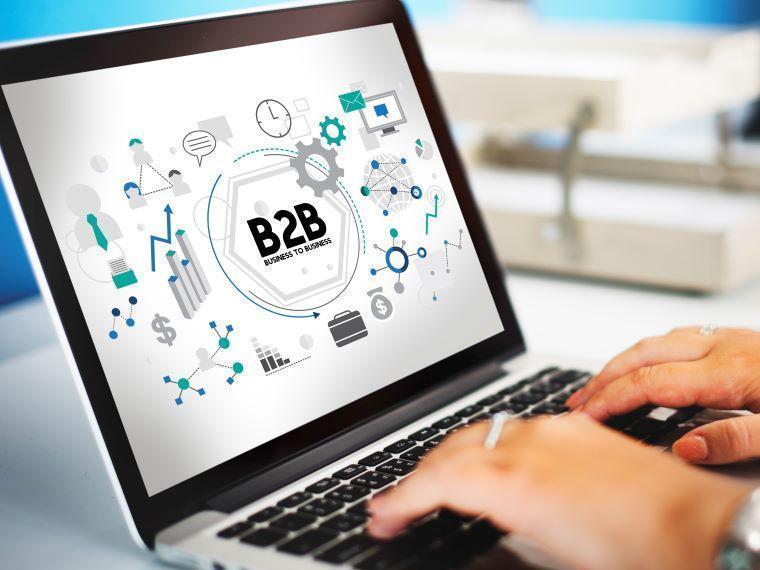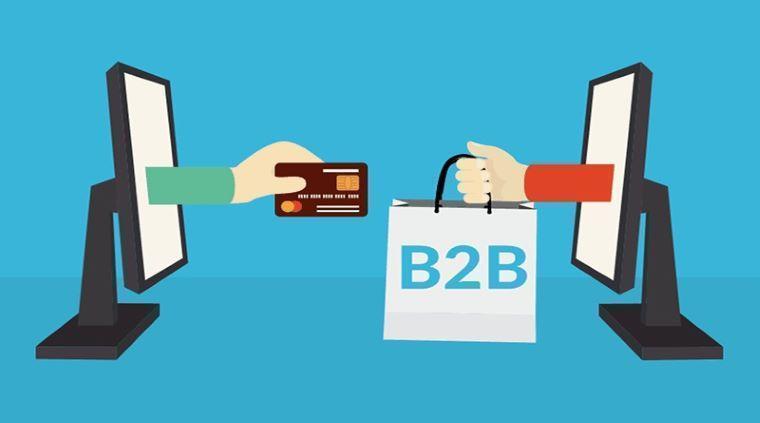Payments in B2B Marketplaces: Challenges, Solutions & Trends

Marketplaces are expected to account for 30% of global online business-to-business sales by 2024, taking a leap from $680 billion in 2018 to an estimated $3.6 trillion1. This phenomenal growth requires adjustments from B2B eCommerce platforms in a variety of aspects, including the way they accept payments.
This overview sheds light on the state of the B2B marketplace landscape today, describes the major changes it is going through, and explains what the future of payment transactions conducted on these platforms looks like.
The Current State of Online B2B Marketplaces

The world’s top B2B marketplaces nowadays are:
- Alibaba - founded in 1999, it’s the world’s largest B2B marketplace for wholesale goods. As of March 2022, Alibaba Group served approximately 305 million international customers over the past year, up from 240 million in 20212.
- Amazon Business - Amazon launched the B2B commerce version of the marketplace for enterprises of all sizes in 2015. The platform is now thriving and expected to hit a gross merchandise volume of $83 billion by 20253.
- eWorld Trade - this highly reputable platform hosts over 1 million traders globally and is continuously upgrading its services. For instance, in January 2022, the platform released an updated mobile application that raises the bar for B2B eCommerce software4.
These are just three big examples; however, the B2B marketplace landscape isn’t limited to those.
What Is the Emerging Trend Among B2B Marketplaces?

According to the latest research, one of the emerging trends among B2B marketplaces is the increasing number of industry-specific platforms, such as those related to:
- Chemicals
- Machinery
- Electronics
- Agrifood
- Aerospace
Main Challenge of Payment Methods at B2B Marketplaces

One of the main issues that many B2B eCommerce platforms need to address concerns the payment methods they offer. Let’s take a look at the statistics:
- Nearly three-fourths of marketplaces globally enable clients to pay through their platforms.
- Of those, 76% process credit card transactions; however, the high average order values that are characteristic of B2B purchases make this option impractical for many users.
- Invoice payments are offered by approximately 50% of such eCommerce sites.
- Only 21% of B2B marketplaces feature Buy Now, Pay Later options.
The customers’ payment preferences, on the other hand, are different, with 95% of businesses preferring invoice payments and 84% finding it highly relevant.
Adding one of the most requested payment methods is one way to improve the purchase process at B2B marketplaces, but is there anything else that could be done?
3 Must-Have Features for Optimized B2B Payments

In a highly competitive landscape, B2B marketplaces have to stand out from the competition by being responsive to the needs of their customers. Some features that will boost a business’s experience on such an eCommerce platform are:
- Dynamic pricing - Unlike B2C sales, where the prices are fixed, B2B transactions often involve a negotiation process before the deal is sealed. Thus, buyers need to be able to see the negotiated prices as per their contract rather than the standard pricing displayed by default.
- Adapted workflow for purchase validation - It’s not uncommon in companies for different people to participate in the purchasing process. For instance, the person who deals with the order placement is not necessarily the one who pays for it. B2B marketplaces must be able to identify these different players to ensure transparency for the administrators.
- Billing mandate service - This feature enables marketplaces to issue a single invoice for all purchases the buyer has made from various sellers on the platform. This would spare the customer the time and effort they spend on paperwork and make the bills easier to manage.
B2B Marketplaces: Entering the eCommerce Mainstream

The B2B eCommerce industry has had an on-and-off relationship with marketplaces over the past 20 years. This was mainly due to the incapability of technology at the time to provide services convenient enough to retain users.
However, nowadays, B2B marketplaces are back in trend with functionalities that enable enterprises to place orders in a fast, secure, and efficient way. Today, it is clear to see that these eCommerce platforms for businesses are here to stay, as competition between them continues to grow.
B2B marketplaces that will be the first to combine the clients' preferred payment methods, an optimized billing process, and transaction transparency, are sure to gain a significant competitive advantage that will be hard to top.
1 - DEPT - The rise of B2B digital marketplaces
2 - Statista - Number of annual active consumers on Alibaba Group
3 - Statista - Amazon Business - statistics & facts
4 - Newswires - We eWorldTrade: Leading B2B Marketplace with 1M+ Traders is Now Mobile
5 - Forrester - Industry Marketplaces Take Off

